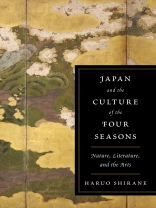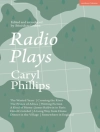Elegant representations of nature and the four seasons populate a wide range of Japanese genres and media—from poetry and screen painting to tea ceremonies, flower arrangements, and annual observances. In Japan and the Culture of the Four Seasons, Haruo Shirane shows how, when, and why this practice developed and explicates the richly encoded social, religious, and political meanings of this imagery.
Refuting the belief that this tradition reflects Japan’s agrarian origins and supposedly mild climate, Shirane traces the establishment of seasonal topics to the poetry composed by the urban nobility in the eighth century. After becoming highly codified and influencing visual arts in the tenth and eleventh centuries, the seasonal topics and their cultural associations evolved and spread to other genres, eventually settling in the popular culture of the early modern period. Contrasted with the elegant images of nature derived from court poetry was the agrarian view of nature based on rural life. The two landscapes began to intersect in the medieval period, creating a complex, layered web of competing associations. Shirane discusses a wide array of representations of nature and the four seasons in many genres, originating in both the urban and rural perspective: textual (poetry, chronicles, tales), cultivated (gardens, flower arrangement), material (kimonos, screens), performative (noh, festivals), and gastronomic (tea ceremony, food rituals). He reveals how this kind of ‘secondary nature, ‘ which flourished in Japan’s urban architecture and gardens, fostered and idealized a sense of harmony with the natural world just at the moment it was disappearing.
Illuminating the deeper meaning behind Japanese aesthetics and artifacts, Shirane clarifies the use of natural images and seasonal topics and the changes in their cultural associations and function across history, genre, and community over more than a millennium. In this fascinating book, the four seasons are revealed to be as much a cultural construction as a reflection of the physical world.
Jadual kandungan
List of Illustrations
Preface
Acknowledgments
Historical Periods, Romanization, Names, Titles, and Illustrations
Introduction: Secondary Nature, Climate, and Landscape
1. Poetic Topics and the Making of the Four Seasons
2. Visual Culture, Classical Poetry, and Linked Verse
3. Interiorization, Flowers, and Social Ritual
4. Rural Landscape, Social Difference, and Conflict
5. Trans-Seasonality, Talismans, and Landscape
6. Annual Observances, Famous Places, and Entertainment
7. Seasonal Pyramid, Parody, and Botany
Conclusion: History, Genre, and Social Community
Appendix: Seasonal Topics in Key Texts
Notes
Bibliography of Recommended Readings in English
Selected Bibliography of Secondary and Primary Sources in Japanese
Index of Seasonal and Trans-Seasonal Words and Topics
Index of Authors, Titles, and Key Terms
Mengenai Pengarang
Haruo Shirane is Shincho Professor of Japanese Literature and Culture at Columbia University. He is the author and editor of numerous books on Japanese literature, including, most recently,
The Demon at Agi Bridge and Other Japanese Tales;
Envisioning The Tale of Genji: Media, Gender, and Cultural Production;
Traditional Japanese Literature: An Anthology, Beginnings to 1600;
Early Modern Japanese Literature: An Anthology, 1600–1900;
Classical Japanese: A Grammar; and
Traces of Dreams: Landscape, Cultural Memory, and the Poetry of Basho.












